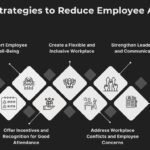In today’s fast-paced world, the pressures of work, relationships, and societal expectations can feel overwhelming, especially for young adults. For many, this stress can manifest as panic attacks—intense episodes of fear and discomfort that often strike without warning. If you’re in your 20s or 30s and experiencing this, know that you’re not alone. Let’s break …
In today’s fast-paced world, the pressures of work, relationships, and societal expectations can feel overwhelming, especially for young adults. For many, this stress can manifest as panic attacks—intense episodes of fear and discomfort that often strike without warning. If you’re in your 20s or 30s and experiencing this, know that you’re not alone.
Let’s break down what happens to your body during a panic attack, why it happens, and how you can take back control.
What Exactly Is a Panic Attack?

A panic attack is a sudden surge of overwhelming fear or anxiety that triggers intense physical and emotional reactions, even when there is no clear danger or cause. It can feel as if your body is in crisis, and this experience can be frightening if you don’t understand what’s happening.
Panic attacks are more common than you think, especially in India’s younger generation, where academic pressure, career stress, work deadlines and family expectations often collide. According to studies, anxiety disorders are on the rise among Indian youth, but the stigma surrounding mental health often prevents open conversations.
What Happens to Your Body During a Panic Attack?
When you experience a panic attack, your body activates its “fight-flight-freeze” response, a survival mechanism designed to protect you from immediate threats. Here’s a breakdown of the science:
- The Brain Signals Danger: Even if there is no real threat, your brain misinterprets a situation and triggers the amygdala—the part of the brain responsible for fear—to signal danger.
- Adrenaline Rush: Your body releases adrenaline, a stress hormone that prepares you to “run” or “fight.” This causes physical changes like increased heart rate, faster breathing, and sweating.
- Physical Symptoms Kick In
- Heart Palpitations: Your heart beats rapidly as it pumps more blood to your muscles.
- Shortness of Breath: You may feel like you can’t breathe deeply.
- Dizziness: The rush of oxygen can make you lightheaded.
- Shaking or Sweating: Your body tries to regulate itself.
- Chest Pain: Tightness in the chest can mimic a heart attack.
- The Fear Cycle: The physical symptoms can feel so intense that they trigger more fear, leading to a loop where the panic feeds on itself.
These episodes typically last 5-20 minutes but can feel much longer. Understanding this is key—it is your body reacting to a false alarm, and you are not in real danger.
Why Are Panic Attacks So Common Today?
In India, societal factors play a significant role in increasing anxiety and panic attacks among the 18-35 age group:
- Career and Academic Pressure: Competitive exams, job instability, and demanding workplaces take a toll.
- Social Media Stress: Constant comparison and the pressure to present a “perfect” life can trigger feelings of inadequacy.
- Family Expectations: Many young Indians feel torn between traditional family roles and their own aspirations.
- Urban Lifestyle: Fast-paced city life, sleep deprivation, and lack of time for self-care exacerbate mental health issues.
Add to this a general lack of awareness about mental health, and many people feel isolated or ashamed to seek help.
How to Cope with Panic Attacks: Practical Tips
The good news? Panic attacks are manageable. Here are proven strategies to help you cope:
1. Practice Deep Breathing: Focus on slowing down your breath. Try the 4-7-8 method:
- Inhale for 4 seconds.
- Hold for 7 seconds.
- Exhale slowly for 8 seconds. Deep breathing activates the body’s relaxation response.
- Refer our blog on breath work to know how it helps you and why its a good to include it in your daily routine.
2. Ground Yourself: Use the 5-4-3-2-1 technique to anchor yourself:
- Identify 5 things you can see.
- Touch 4 things you can feel.
- Notice 3 sounds around you.
- Name 2 things you can smell.
- Focus on 1 thing you can taste. This mindfulness practice can interrupt the panic cycle.
3. Challenge Negative Thoughts: Remind yourself: “This is a panic attack. I’m safe. It will pass.” Replace catastrophic thoughts with calming, rational ones.
4. Adopt a Healthy Lifestyle
- Exercise Regularly: Physical activity releases endorphins that reduce anxiety.
- Sleep Well: Lack of sleep heightens stress levels.
- Avoid Caffeine and Nicotine: Both can trigger anxiety symptoms.
5. Seek Support
- Talk to Friends or Family: Sharing your feelings reduces their intensity.
- Reach Out to a Professional: Therapy can provide tools to manage anxiety. Cognitive Behavioral Therapy (CBT) and mindfulness-based practices are particularly effective.
Breaking the Stigma
Panic attacks are not a sign of weakness. They are your body’s response to overwhelming stress, and they can happen to anyone. It’s time to change the narrative around mental health in India.
If you experience panic attacks, don’t hesitate to reach out to a mental health professional. Therapy provides a safe, judgment-free space to understand your triggers and build resilience.
You Are Not Alone
If you’ve had a panic attack, know that you’re not the only one going through this. Millions of young adults face the same struggles every day. With the right tools and support, you can regain control and live a fulfilling life.
Take a deep breath. This moment will pass. And so will the storm.
Need help managing panic attacks or anxiety? Reach out to a mental health professional today. You deserve to feel better. We at Catalyst Psyche Inc are committed for your wellness.






